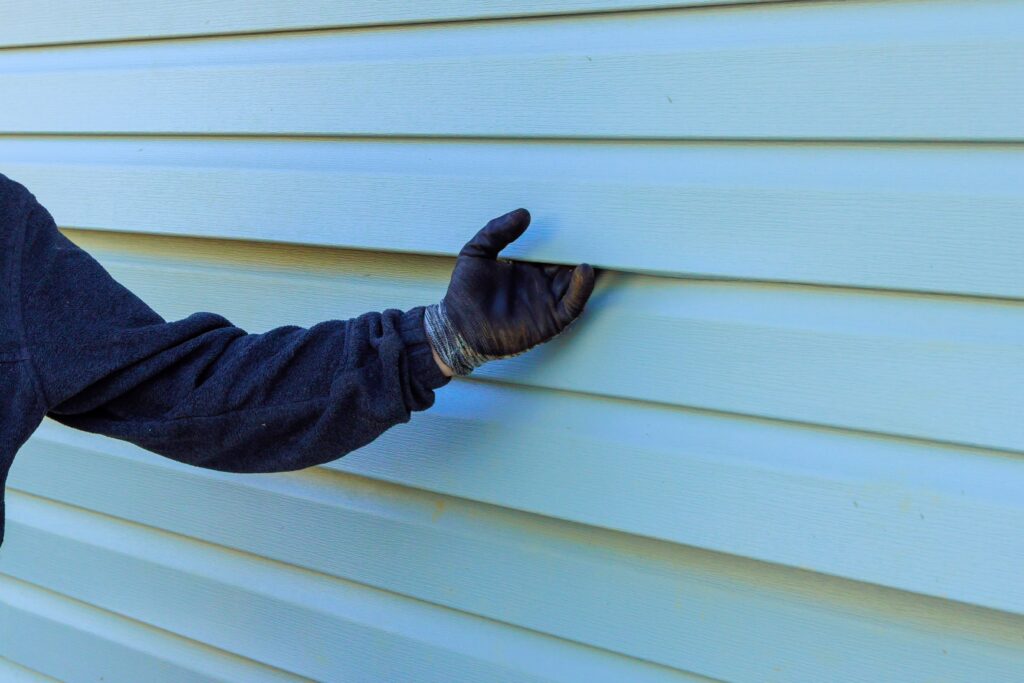Siding Replacement vs. Repair: How to Decide What’s Best

When your siding starts peeling, cracking, or humming “help me” in the middle of a storm, your heart whispers, “Can’t I just patch it?” Repairs feel cheaper, quicker, and low-flex. And in truth, there are absolutely situations where a small siding issue is more easily (and cheaply) repaired than replaced.
But for larger issues, replacement is the way to protect your home and its value. Siding is one of the most important protective layers of your home, and where you invest matters—especially when your home’s value, energy costs, and appearance are on the line.
In this article, we’ll show you what to think about for both repairs and full replacement—and when you may truly need both. Spoiler: replacement tends to make more long-term sense, but repairs can work if—and only if—they’re done strategically and realistically.
1. How Much Does It Cost?
Replacement Averages
- Nationally, full siding replacement averages over $11,000, but can range widely, from about $5,500 to over $30,000—depending on size, material, and location. Larger homes or more expensive materials can take those costs even higher.
- Vinyl siding tends to be one of the less expensive options on the market, where materials like brick or some of the new insulated composites can run on the high end of the spectrum. There are multiple siding options for most homes, and prices can even vary between local contractors. Check with more than one to understand costs in your area.
Why prices vary so widely:
Regional contractor rates vary. Materials like wood, brick, or stone are more expensive. Complexity (lots of corners, multiple levels) ups labor. And climate? If your home is in a moist or cold zone, you may pay more for better moisture barriers or insulative options.
Repair Estimates
- Repairs cost less as a rule, as the materials are already on the home, and labor tends to be cheaper—but total costs depend on size and job complexity.
- The type of material being repaired is also a factor. Vinyl and stucco tend to have easier repair methodologies than stone, brick, or wood, but these are also impacted by the type of repair being considered. Splits or cracks are very different from mold or rot, and it’s always wise to have a trustworthy and licensed contractor helping you understand the pros and cons of repairs vs. replacement. Someone who is experienced and professionally bonded can do a thorough inspection, and let you know if underlying issues could send your costs (no pun intended) through the roof.
2. Repair: When It Makes Sense
Repair the siding when:
- Damage is isolated (like one or two panels).
- The material is still structurally sound and well matched visually.
- You have plans for replacing when timing is better, and need a stopgap.
- You’re under time pressure (like prepping for a quick sale).
Example: A nicked vinyl section, a small dent in aluminum—those can be repaired relatively inexpensively. Much cheaper than replacing entire walls.
3. Replacement: When It’s Worth It
Replacement is smarter when:
- Damage is widespread—rotting, bubbling, moisture behind panels.
- You want a long-term solution (most siding lasts 20–40 years, brick/stone even longer).
- The siding is outdated, energy inefficient, or you’re refreshing curb appeal.
- There’s structural risk—like compromised house wrap, underlying rot, or insulation issues.
Replacing also often offers better ROI. For example, vinyl siding can recoup up to 80% when you sell.
4. Regional Realities
- Hot, sunny climates (South/Southwest): Vinyl warps, fades; stucco may crack, but most local installers have better knowledge as to how to patch it.
- Cold, wet climates (Northeast, Pacific Northwest): Fiber cement prevails, but repairs can be pricier due to skilled labor.
- Humid Southeast: Beware of wood rot and mold—minor repairs may hide larger damage.
- Mountain or wind-exposed zones: Securable nails, durable paneling, or steel siding adds upfront cost, but can save major issues during storms.
So: always factor in your climate, material choices, and local installer experience into your cost vs. repair calculus.
5. Nudges That Help You Decide
- If damage is on less than 10% of your home: repair now, then re-assess in a year.
- If you’re in a high-repair-cost region (like cold or remote areas), replacement might save you manual bids, delays, and the cost of multiple visits post-repair.
- Mix and match: patch or replace only the worst areas if full replacement will happen within 5 years anyway.
- Get 2–3 quotes— no matter which method you’re pursuing. Materials, installation timelines, warranties, and deals all vary widely by contractor and supplier.
Scenario | Repair | Replacement |
Minor, aesthetic damage | Affordable, quick | Overkill |
Chronic issues or widespread damage | Band-aid | Long-term fix |
Regional price premiums | Good if fixable | Often still worth it for peace of mind |
Preparing to sell or modernize | Fix for listing | Boost resale value |
Wrapping It Up
Pun intended. A quick summary:
- Repair is economically smart for small, manageable damage—especially when budgets are tight, or it buys time during busy seasons.
- Replacement, though pricier upfront, rebuilds reliability and cuts long-term headaches—especially when siding nears the end of its life or the home needs aesthetic/value upgrades.
- Location matters. Pay attention to what your region’s weather and tradespeople favor or struggle with. While there are several variables, research will usually shine light on the best option for you.
Remember: you’re not committing to one forever. Repair gets you by. Replacement repositions your home. And either way, talking to a couple different pros will empower you to own the decision—not let the decision own you. Whether you’re patching damage or reinventing your exterior, get multiple local siding estimates now. It’s the best way to know if repair is truly sufficient—or if replacement unlocks better long-term value.
Connect with top-rated local contractors who can help you with siding, roofing, HVAC, windows, and more. Get free quotes from verified professionals in your area today.








